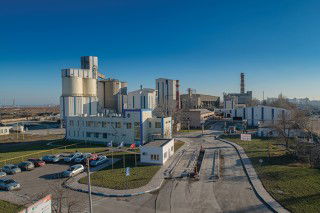HeidelbergCement is accelerating its transformation towards a sustainable future. At this year's Capital Markets Day, HeidelbergCement presented new medium-term sustainability and financial targets under the motto 'Concrete Promises'.
Dr Nicola Kimm, member of the Managing Board and chief sustainability officer of HeidelbergCement, says: "We are significantly tightening our climate targets. With the reduction of specific net CO2 emissions to 400kg/t of cementitious material by 2030, we are establishing the most ambitious goal in the sector." This target corresponds to a reduction of 47 per cent compared with the base year 1990 and is significantly higher than the previous reduction target of 33 per cent for 2030 in the same period. Compared to 2021, the company aims to reduce CO2 emissions by a further 30 per cent. Thus, in the next eight years, CO2 emissions are to decrease more strongly in percentage terms than in the last three decades. "We are focusing on the optimisation of products and processes, as well as in particular on the expansion of CO2 capture, utilisation, and storage (CCUS)," adds Dr Nicola Kimm.
By 2030 HeidelbergCement aims to increase its revenue with sustainable products to a share of 50 per cent of group revenue. Solely with CCUS projects that have already been launched, the company aims to save 10Mt of CO2 cumulatively by 2030. Net investments, including investments in sustainable products, processes, and CCUS technologies, are expected to be EUR1.1bn per annum on average.
Chairman of the Managing Board, Dr Dominik von Achten, said, "On a comparable basis, the company aims to increase revenue by around five per cent per annum over the next few years. The RCOBD margin should be between 20-22 per cent by 2025. In addition, HeidelbergCement is raising its original target of achieving a return on invested capital (ROIC) of 'clearly above eight per cent' and now aims to achieve a ROIC of over 10 per cent."
Meanwhile, HeidelbergCement has concluded a new syndicated credit line – for the first time taking into account sustainability objectives in accordance with the Sustainability-Linked Loan Principles (SLLP) of the Loan Market Association. The credit line has a term of five years with two one-year extension options. The credit margin is based on the achievement of HeidelbergCement's climate targets and is adjusted depending on the CO2 emissions per tonne of cementitious material and the alternative fuel rate.
